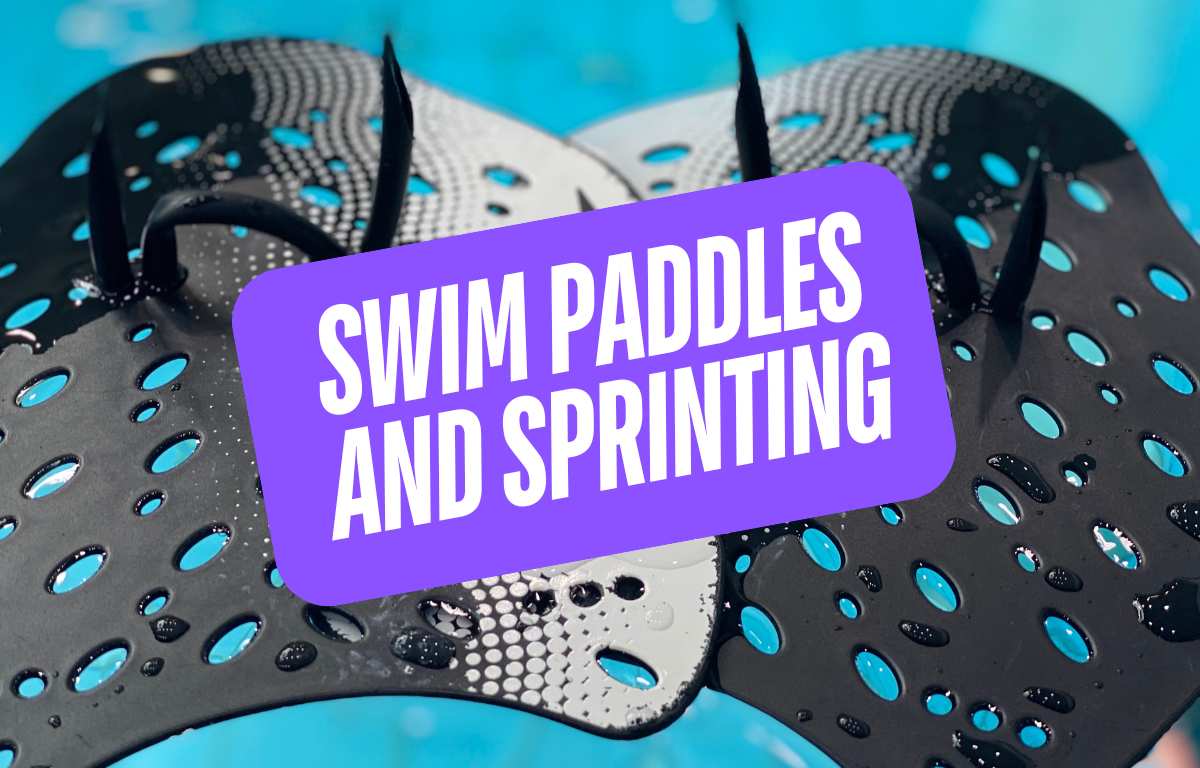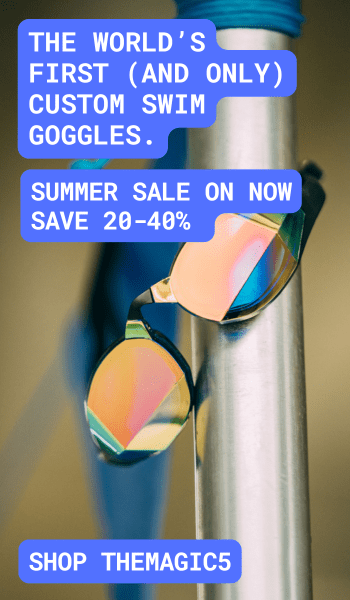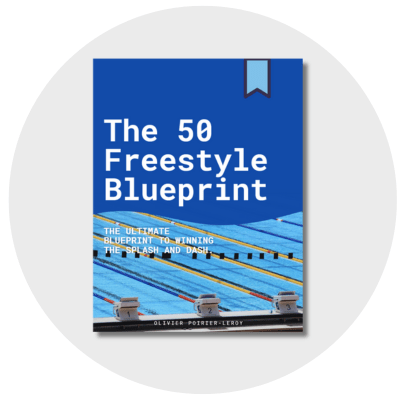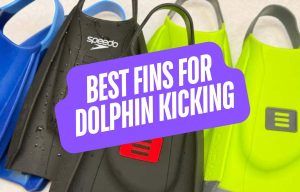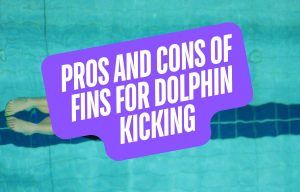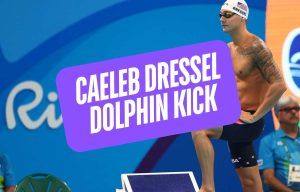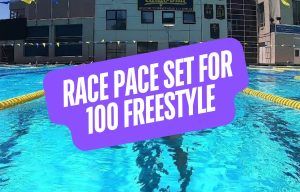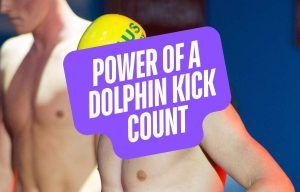Paddles are one of the first tools sprinters look to when trying to improve power and speed. Here’s a look at why you should consider leaving them in your mesh bag.
Like most swimmers, swim paddles are one of my favorite forms of swim gear.
They give us that satisfying hook into the water, making the pull feel more powerful and leaving shoulders and lats tingling after a banger of a main set.
Which would lead swimmers to assume that swim paddles are the perfect way to improve sprint swim speeds. The logic is straightforward: the added surface means the upper body works harder… and this should yield more power and speed.
Right?
Well, maybe not. And certainly not as well as other types of sprint training.
Here’s why.
Paddles change your stroke
Let’s start off with how paddles change your stroke—even at maximal speeds.
De Matos et al. (2023) looked at how technique and performance changes when swimmers did 50 free max-effort with and without paddles or swim fins.
Here’s what they found when swimmers wore paddles:
- Stroke length increased by almost 16%
- Stroke rate decreased by around 14%
- Stroke asymmetry (gallop) in swimmers’ stroke increased, with swimmers using more of a catch-up
When looking at the stroke kinematics of what happens when we sprint, we can see that paddles go in the other direction to a more distancey stroke: longer stroke, slower tempo, more gliding and catch-up.
See also: 7 Tips for Swimming a Faster 50 Freestyle
That’s the opposite of sprinting, which relies on shorter, higher tempo strokes that are more symmetrical. From a technique perspective, paddles are more likely to actually move you away from training a sprint-specific stroke (bummer).
Paddles make swimming easier
What about force production? Surely paddles make your arms, shoulders and lats stronger with all that added surface area, right?
Not quite. Another study (Tsunokawa et al., 2019) compared paddles and no-paddles at identical speeds and found that muscular power demand dropped, since the bigger hand area did the work.
In other words, using paddles made swimming easier. This happens because paddles enlarge the hand’s surface area, doing more of the work. You become more efficienty at moving water, but you’re not producing more muscular power.
So while paddles can make us feel stronger in the water, the truth is that swimming with them is less intensive from a force-production perspective. Also not ideal if the goal is sprint speed.
Paddles are less effective for building power
Okay, what happens when we use paddles during sprint training at practice? Wouldn’t this improve top end speeds?
Barbosa et al. (2020) tested this with a group of swimmers, who did a sprint set three times per week for four weeks:
- 10×10 strokes all out with paddles
- 60 seconds rest between reps
Conventional wisdom would suggest the surface area to crank up improvements in force and speed. Nope—post-intervention testing saw no increases in speed or tethered swim force compared to the control group, who did the same set without paddles.
Compared to resisted sprint training interventions, which regularly see improvement of 2-7%, paddles appear to be a bit of a soggy towel for improving sprint performance.
So is there a role for paddles?
Sure! Just not for speed development.
Paddles can still be super useful for things like:
- During drill to really hammer an early vertical forearm (e.g. Long dog drill)
- Sculling work, increasing pressure on the forearms and wrists to improve feel for the water
- Strength overload, where the goal is efficiency and not peak speed, stroke rate, and sprint-specific technique
For power and sprint speed, focus on using true resistance training tools in the water (drag chute, tubing, power tower, DragSox) and accelerate the hands and hit those higher stroke tempos.
Happy sprinting!
The Ultimate Guide to Sprint Freestyle
Want to learn exactly what it takes to sprint at an elite level? The 50 Freestyle Blueprint is a detailed and evidence-based guide that will show you everything you need to know—step-by-step—how do develop an elite sprint freestyle.

The 50 Freestyle Blueprint is a 220-page guide filled with actionable insights, research, and practical takeaways that you won’t find anywhere else. It covers everything from how to build an explosive start (the right way), mastering sprint technique (it’s much different than your regular freestyle stroke), and much, much more.
Learn more below about how The 50 Freestyle Blueprint will help you unlock blistering speed in the pool:

